Shadowrift is a cooperative, hand-management boss fight for one or more players
During the last two months or so, like the rest of the United Kingdom and most of the world, I’ve been confined to quarters thanks to Covid-19. During this time, aside from expanding my collection of unopened Lego sets and drinking too much wine, I’ve been playing a lot of solo and cooperative games (with my wife) to pass the time. Shadowrift might just be the best of them.
In Shadowrift the players represent the heroes who will defend an unnamed town, or perhaps the keep of a castle, as a horde of ravenous monsters attempts to breach its walls and devour the innocents within. Whilst this trope is common fodder for fantasy games, it’s unusual to see the villagers put to such good use as they are in Shadowrift.
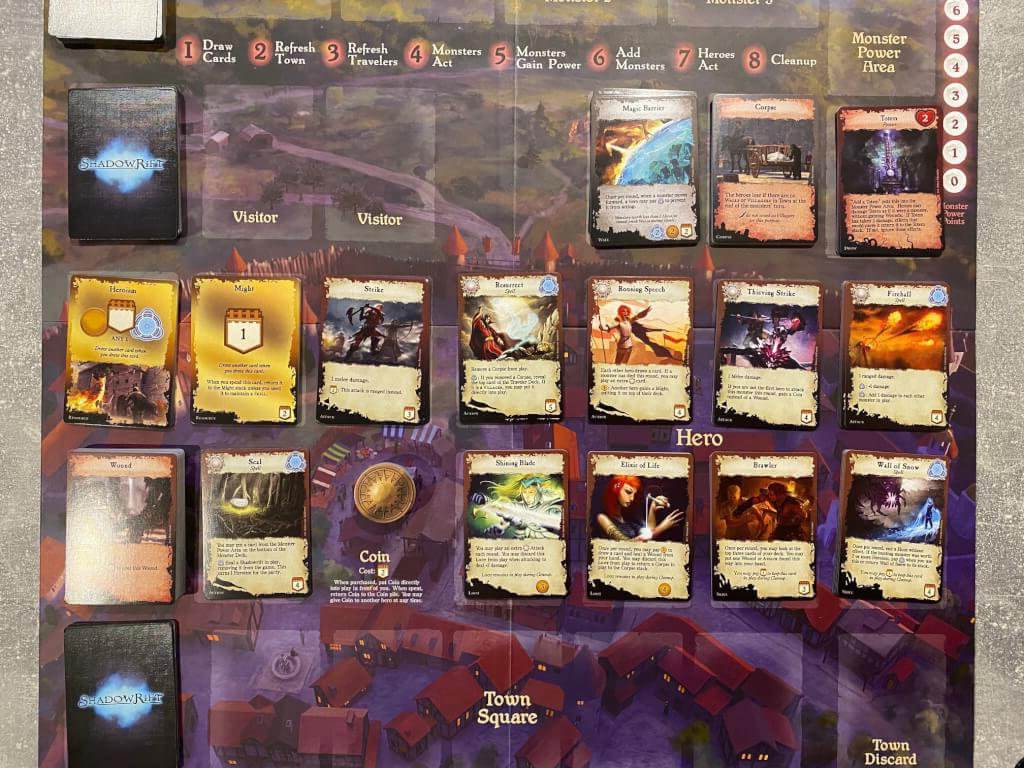
Indeed, for the first time, I can remember, I felt myself groaning about which villager had to be sacrificed because I wanted to keep them both alive, rather than groaning because I had to save some hapless moron whose death would simply move me one step closer up some kind of abstracted doom calculator.
Shadowrift is a deckbuilding game (that is mechanically similar to many others) in which players will need to play cards from their hand to either earn coins (to buy more cards from the display) or to deal damage to the enemies amassing at the wall. Some cards even provide special actions that break the normal rules, while extra special cards might even allow the player to choose from two or more of these effects which makes them very versatile.
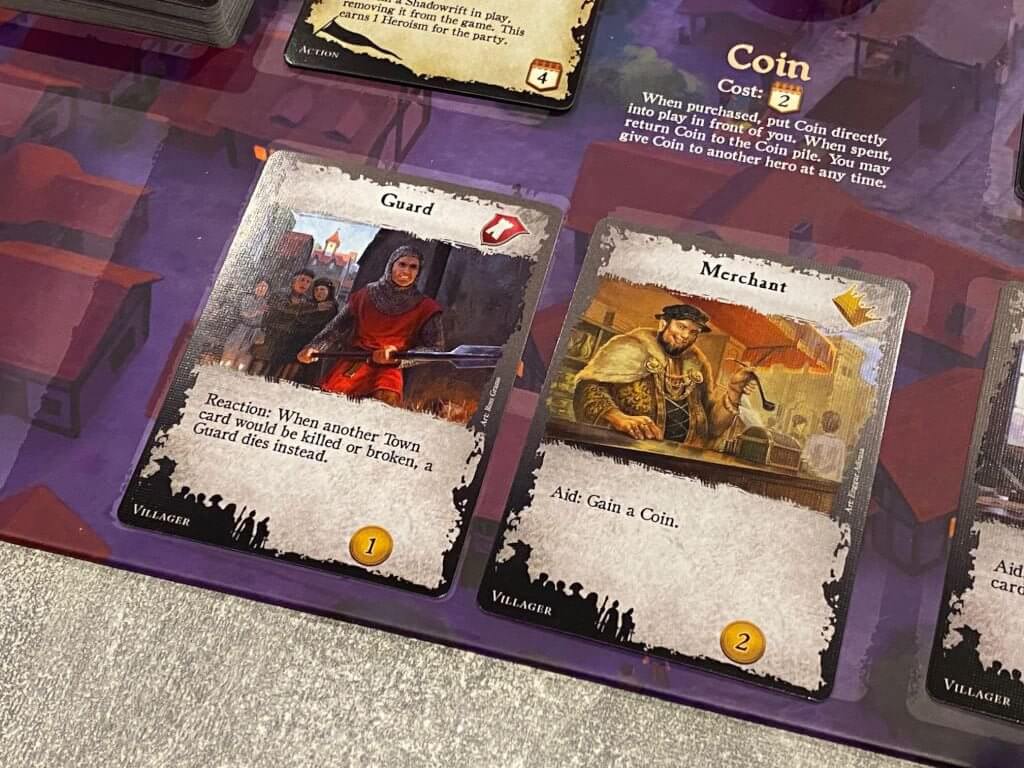
The cards that you’ll be buying will all come from spaces on the board, which include a town square (where villagers gather) and a sort of “passing through” area that I like to think of as an inn, but I can’t actually remember its official name. In the town square, the villagers will simply rotate through a small deck that gets smaller as the monsters pick off the unwary one by one, replacing them with corpses that eventually clog up the deck completely and lose you the game.
The travelling area is similar in that it also features a number of characters that can be recruited, but these folk need to be added into the villager deck first — albeit their effects are powerful. To make this slightly worse, the traveller’s deck will usually include a number of imposter cards, who will be added to the villager deck automatically and will always do a bad thing when drawn.
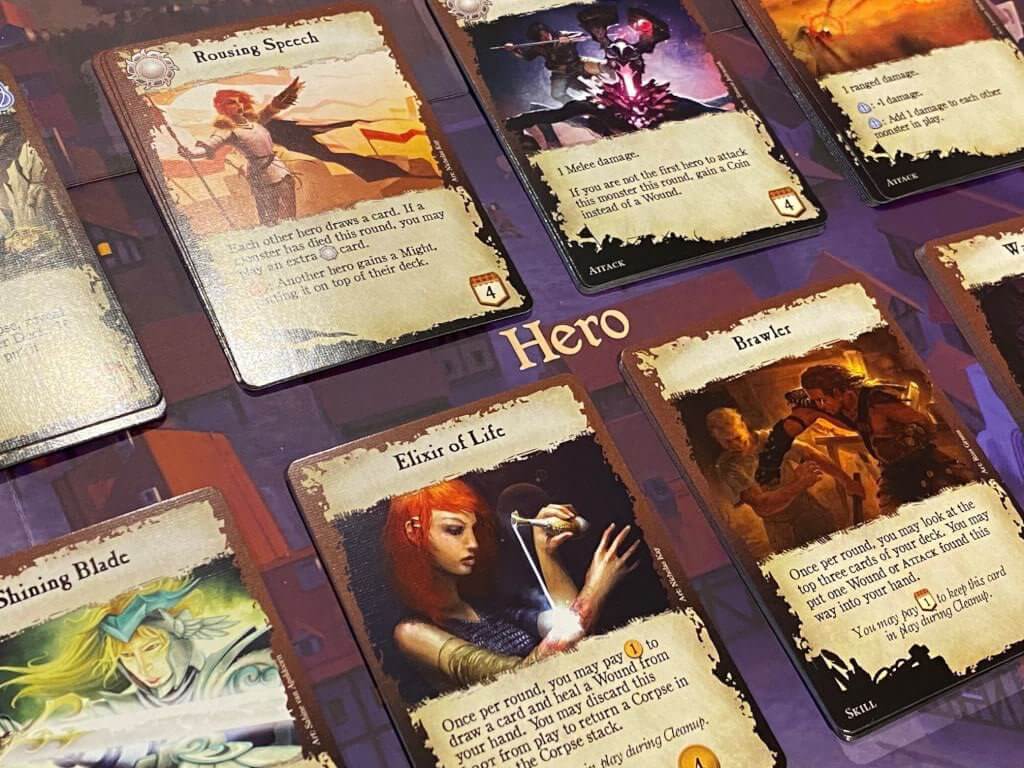
At this point, I should also comment that the base game comes with something like six different enemies — ranging from dragons to demons to draugh, each of which has its own way of making life difficult. Dragons deal a lot of damage and are tough in their own right, but they don’t do much in terms of subversion, making them a straightforward (but still challenging) fight. The demons, on the other hand, are much more cunning and come with a whole host of cultists who will soon infiltrate your village.
As with most similar games, the player can not only recruit these fairly specialised villager/traveller cards but a whole host of basic cards that simply add attack strength or purchasing power. These cards are face up all the time and can always be taken, ensuring that unless a player draws a disastrous hand, they should almost always have an option on their turn.
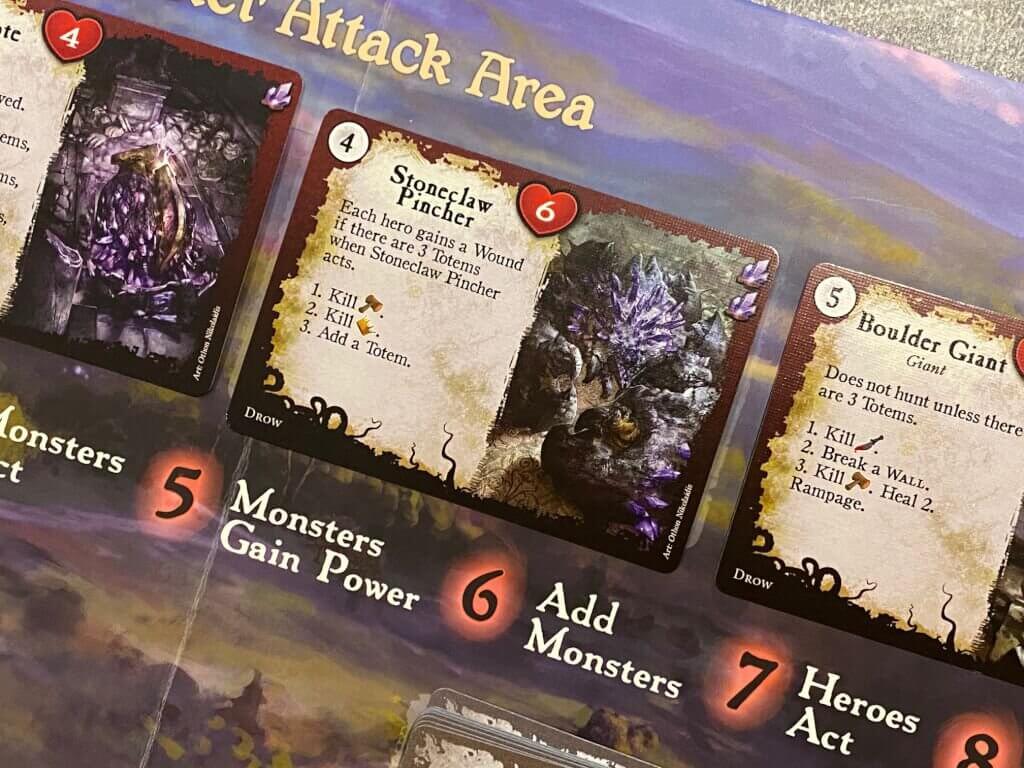
And that’s a good thing because each turn (except in solo mode, which kind of lets the player have two turns to every one enemy turn) the enemies are going to attack. Creatures are drawn from the enemy monster deck and they begin to expand across the board using a track along the top edge. Players must deal damage to them before they reach the end, or else the creature will usually deliver a considerable blow.
Even with that said, each time a creature moves from one space to another it will let off some kind of effect, whether that be to deal damage, force the board state to change or encourage its allies (perhaps calling more, or boosting one already present) in some way. Even worse is the fact that Shadowrift cards lie hidden in the monster deck, and when drawn, things really kick-off. The net effect of this, especially when playing solo or with two players, is that Shadowrift is bloody hard.
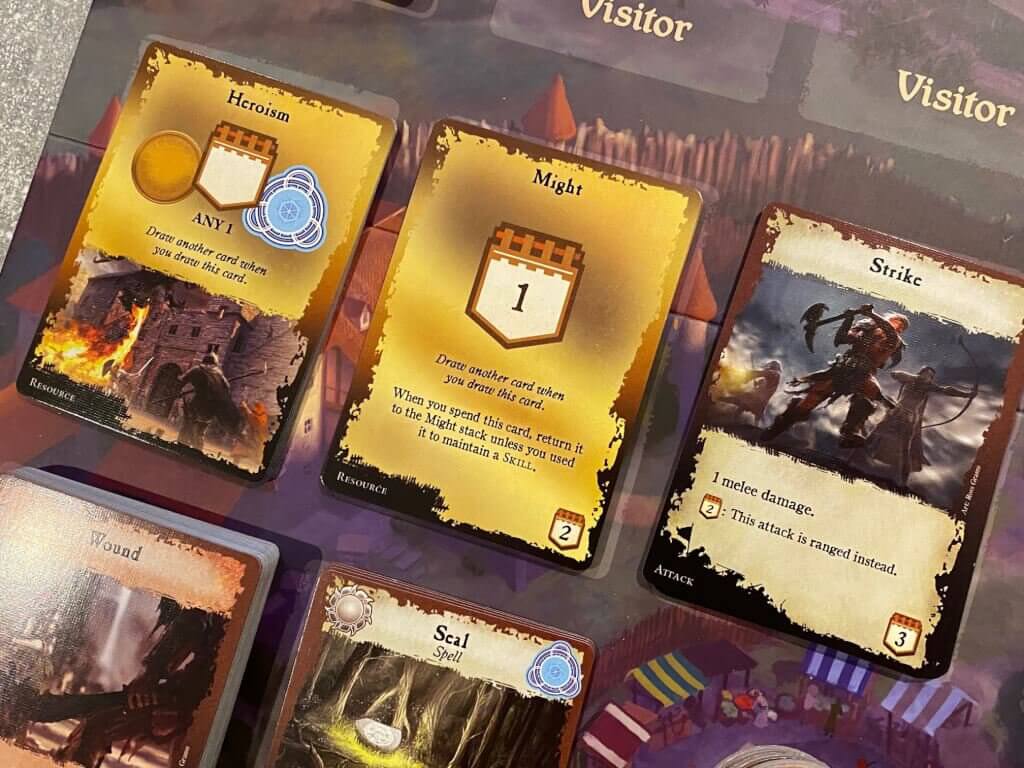
But tough as it is, this is a fantastic deckbuilding game. Firstly, it looks incredible, with a really dark, fantasy theme that is a little generic on one hand but so well realised across the entire component set that it can be forgiven on the other. Every creature snarls and drools with intent, whilst the villagers all deserve to be saved — from the cute urchin to the kind-natured but ultimately doomed guardsmen.
Mechanically, the balance between complex, interesting mechanics and straightforward playability and speed is very well done, meaning that anyone who has played a deckbuilding game before can pick up the changes in about five minutes. Playing without the board (which is an option) makes things a little tricky to track, but since my copy came with the board, I saw little sense in not using it. That’s partly because there’s definitely a speed of setup and play benefit in having written prompts in all the right places.
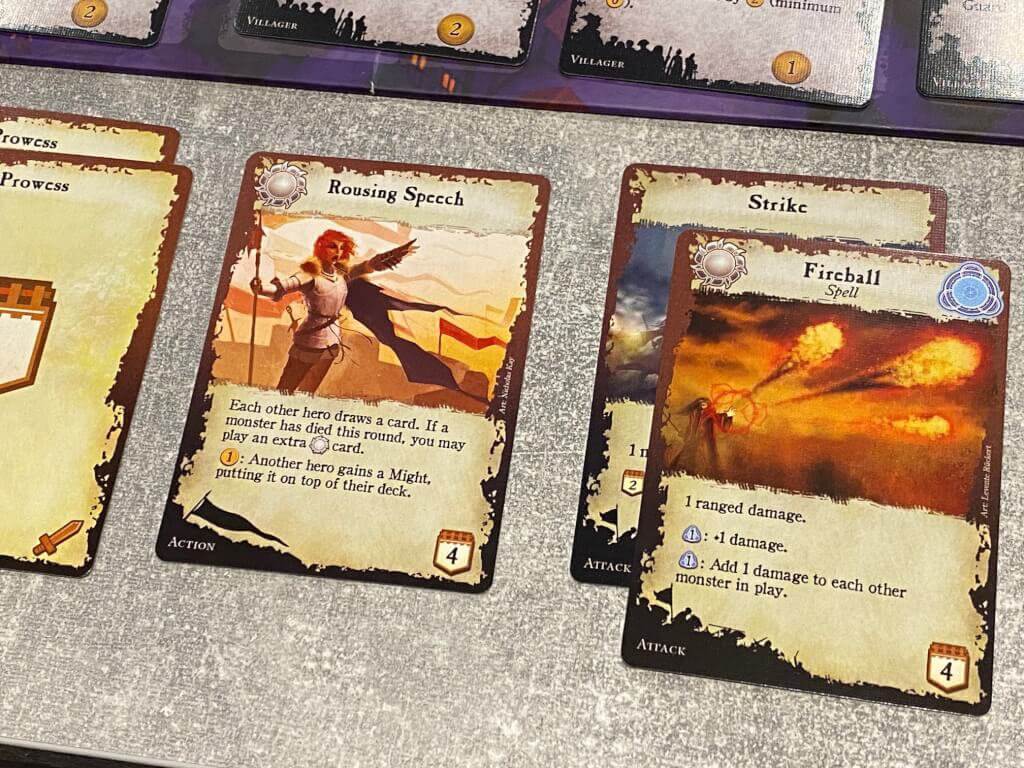
Another fantastic feature of Shadowrift is its replayability. Arguably the villager and traveller decks are a little smaller than I would have liked, but the fact that there are so many different monster decks to choose from more than makes up for it. Where something like The Rise and Fall of Anvalor used the player decks to introduce variety but the enemies were predictable, Shadowrift achieves the opposite.
Whilst I wasn’t looking for a fantasy-based, cooperative deckbuilding game before lockdown, I’ve become more and more appreciative of this kind of game since I’ve been isolated. These games have often been too heavy and too complex for me to play alone or with my wife, and I get a “similar” solo kick from video games in general.
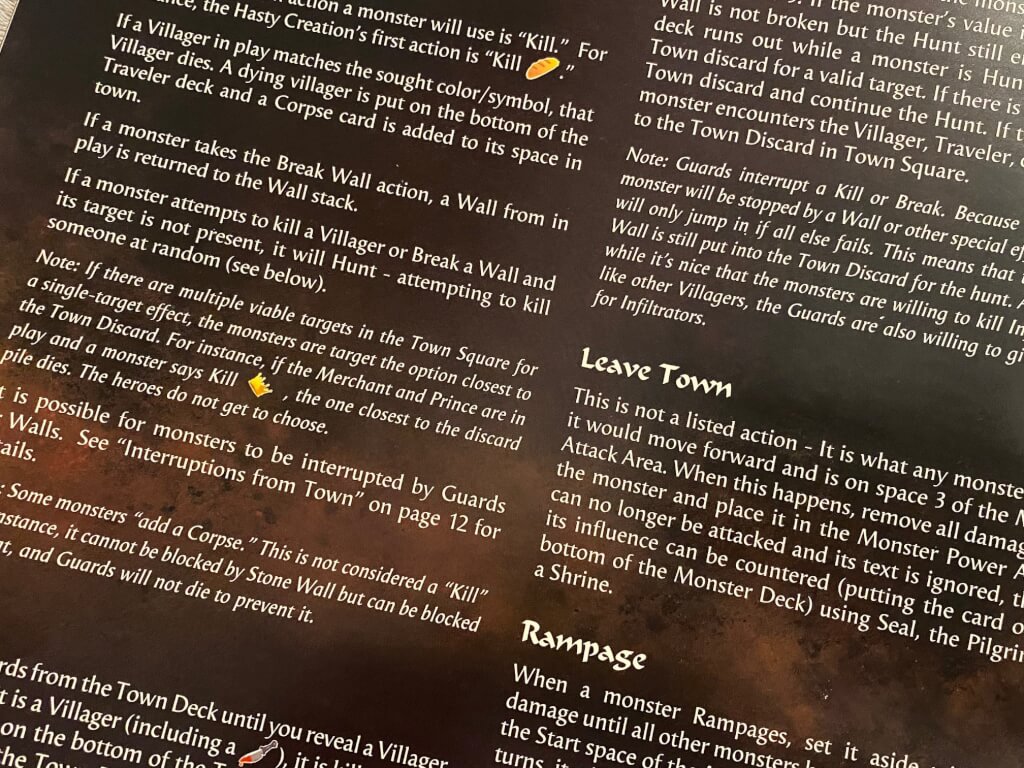
With that said, Shadowrift has me sufficiently impressed that I think I’ll keep delving into it as we emerge from our cocoons, and I might even propose playing it with some of my competitive gaming group in the future. I certainly think that if tough solo or competitive games are your cup of tea already, that you should check this one out. If not, but perhaps the theme or the deckbuilding element appeals to you, then it might also be worth a look — it really is very good.
Shadowrift can be purchase on Amazon.
Love both video games and board games? Here’s our list of some fantastic crossover games.
Comments are closed.